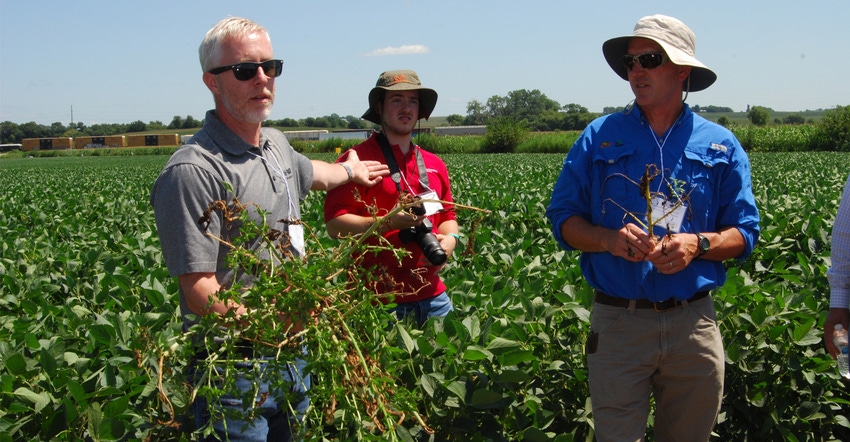December 31, 2019

A professor of rural sociology at Iowa State University, Paul Lasley is a member of the Harrison County pest resistance management team. He was brought onboard to help analyze the county project’s success, so the statewide Iowa Pest Resistance Management Program can help other teams in the state.
In discussing the need to consider new approaches to pest resistance management, he lists 10 points to ponder for everyone in agriculture:
1. Don’t go it alone. “Some things are too big for anyone to accomplish alone and too important not to try to do together,” Lasley says. Farmer Larry Buss, a member of the Harrison County team, recognized that in dealing with Palmer amaranth. The issue of weeds developing resistance to herbicide is too big for an individual or a small group of farmers to solve and achieve workable results. It’s important to find local leaders who can bring people together to respond to this type of problem.
2. Consider it as “our problem.” It’s important for local leaders to identify the need for group action. If an issue such as pest resistance is “our problem,” it’s important to involve the various segments of agriculture in solving it. In Harrison County, rather than seeing pest resistance as a farmer problem, it’s seen as an agriculture problem — the entire ag industry. If “we all own it,” we move from “it’s your problem” or blaming someone for ineffective chemicals or bad seed or bad management choices, to it’s “our problem” and how are we going to respond to it?
3. Don’t ignore threats. If the problem is left unchecked, pests will eventually reduce yield and profits. In Southern states, some fields have been abandoned from growing crops because Palmer amaranth infestations are so bad. That’s been a trigger to cause people in the Corn Belt to start taking notice of the potential threat of Palmer — a weed that has developed herbicide resistance in many fields.
4. Avoid blame game. Acceptance of ownership and existence of pest resistance — without blaming or trying to avoid the issue. Collective ownership of the problem is needed. People in Harrison County are coming together, working to address a common threat.
5. Don’t count on quick fix. There’s no silver bullet for pest resistance. The problem has emerged over the last 30 to 40 years, especially weed resistance to herbicide. It’s going to take passion and persistence to solve it; there’s no quick fix. And probably, the silver bullet many people hope for is not out there.
6. Focus on future farmers. The lesson Lasley has heard repeatedly when he’s met with the Harrison County group centers on their commitment to the next generation of farmers. “If we don’t address pest resistance in our generation, what kind of agriculture are we going to pass on to our children? People on the Harrison County team have expressed that in various ways,” he notes.
7. Strive for team building. As ISU Extension field agronomist Mike Witt, a member of the Harrison County team, says all team members’ ideas need to be heard. That’s one of the advantages of a small group, such as on the county level, where people can discuss the pest resistance problems they see, along with potential solutions.
8. Benefit from personal observations. A local project is effective because it’s locally relevant, and the problem and the effectiveness of the remedy are observable. A local field plot is not the same as reading about research results in an academic journal. You can look at your neighbor’s fields and say, “Yes, we have a marestail problem in our neighborhood.”
9. Sense the urgency. The level of threat impacts the rate of response by farmers and others. In Harrison County, Palmer amaranth was the trigger that caused people to come together. Then they added waterhemp and marestail to the list of herbicide-resistant weeds they are having difficulty controlling.
10. Get local stakeholders involved. How do you get your message out and heard among the chatter of other competing messages? “There are a lot of contradictory statements and claims that can drown out your message,” Lasley notes. “However, having locally driven information, based on demonstration plots and field trials that people can see and learn from, is really helpful. It’s the beginning of the future for solving pest resistance management issues. It’s very important in getting local stakeholders involved.”
About the Author(s)
You May Also Like






